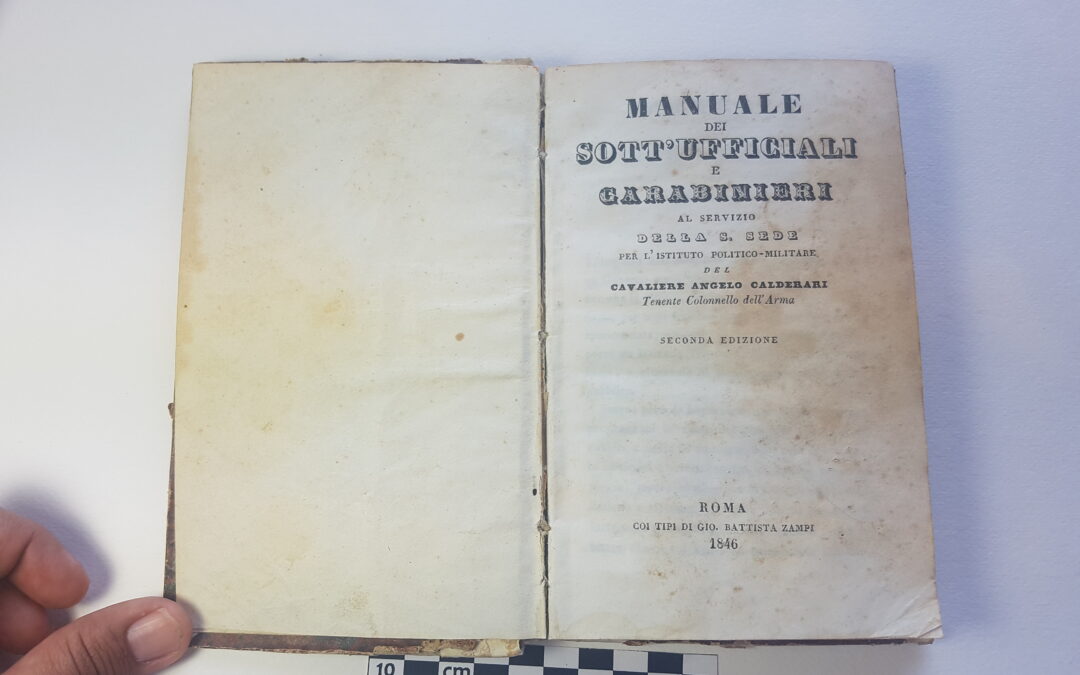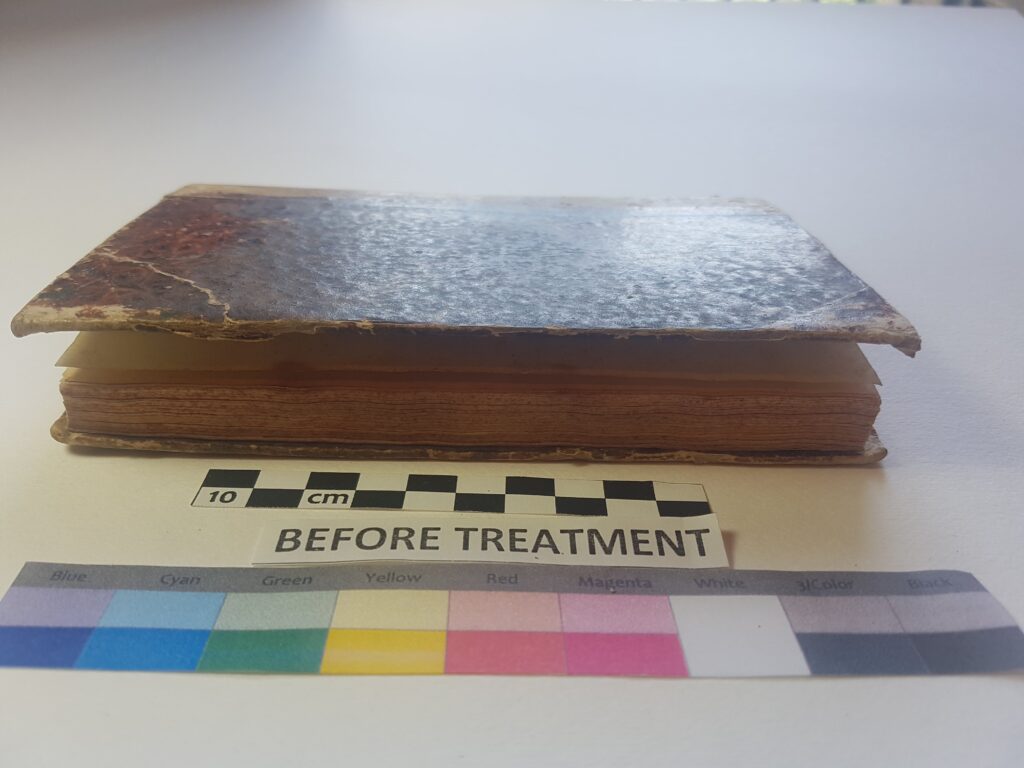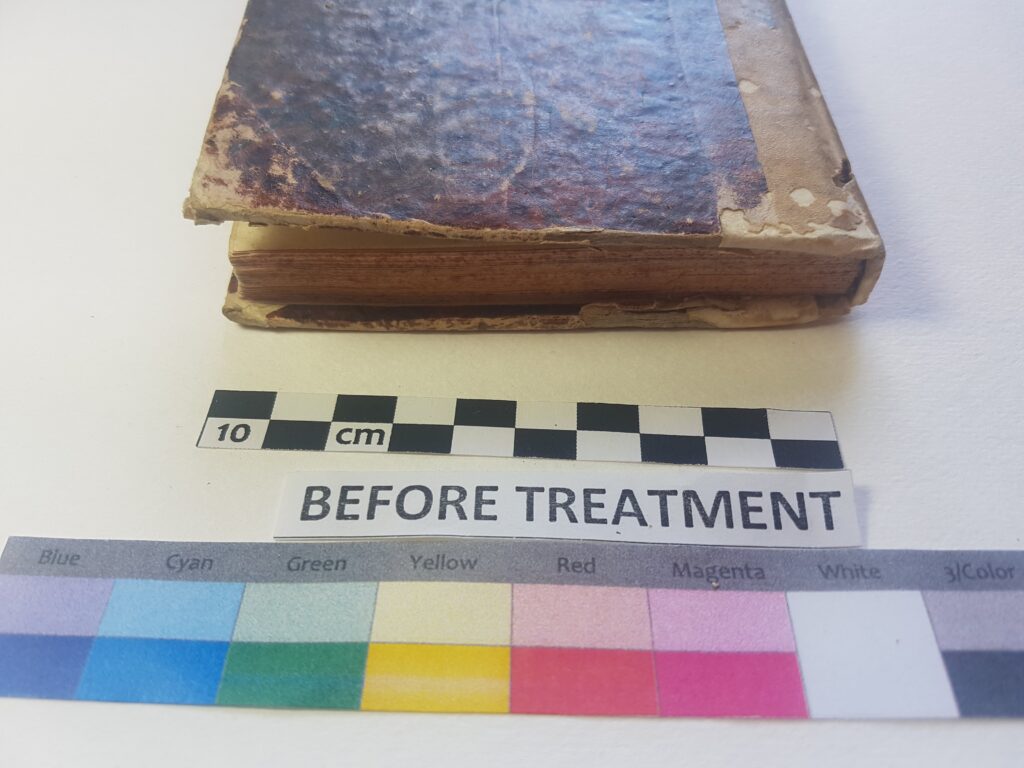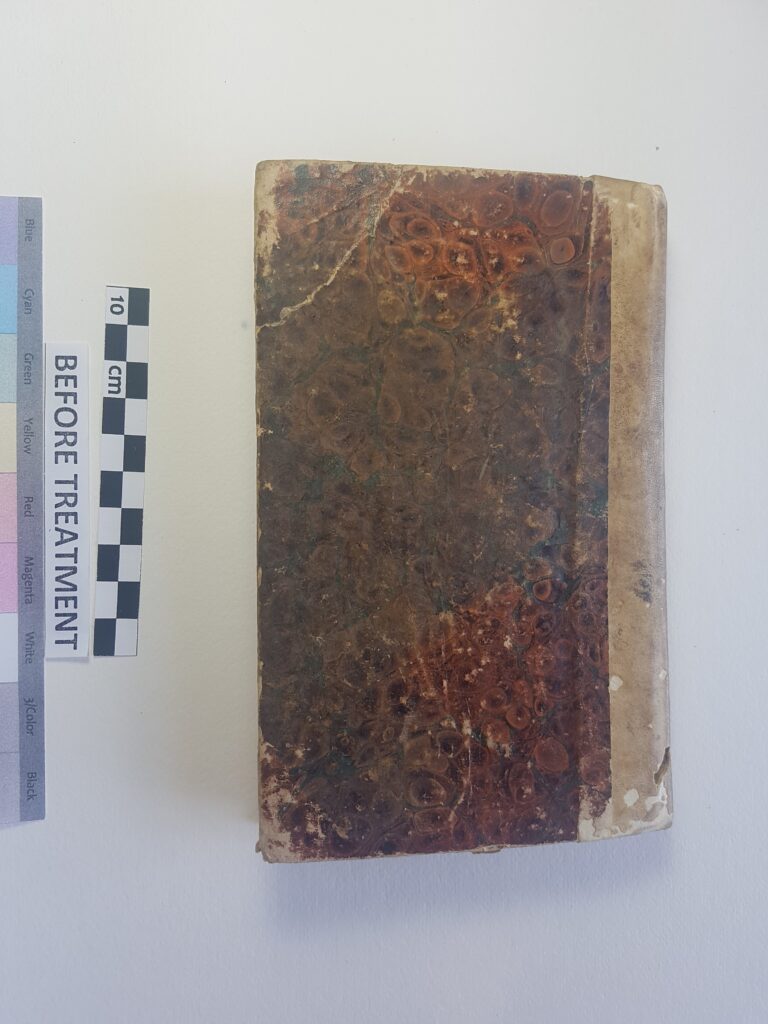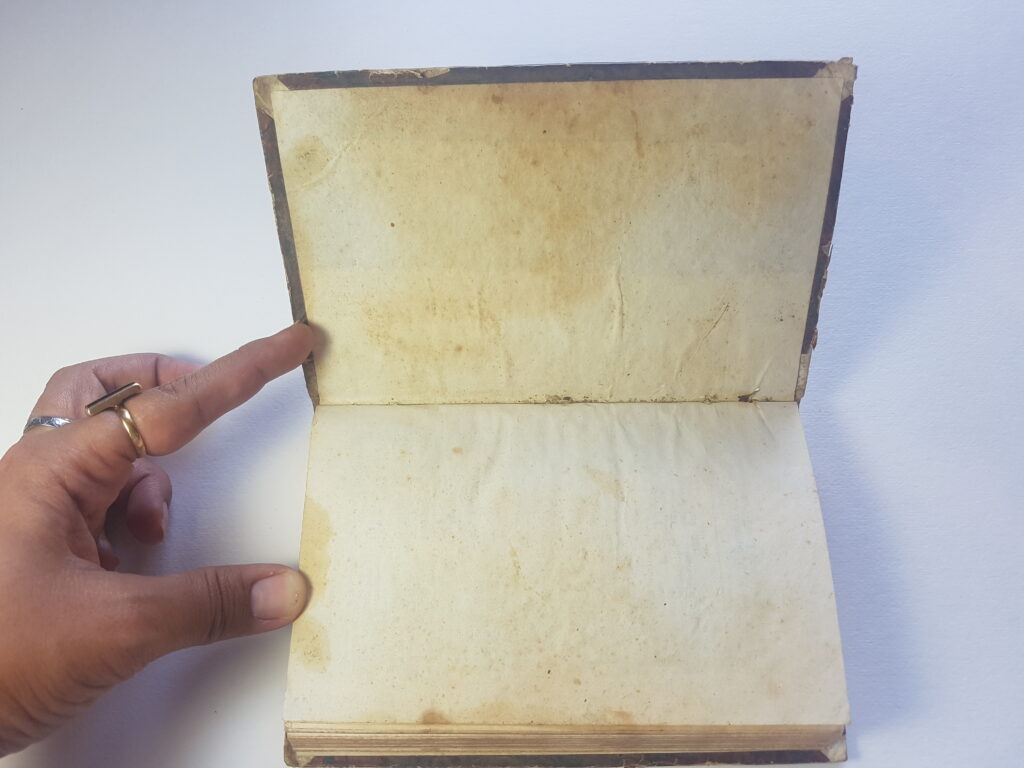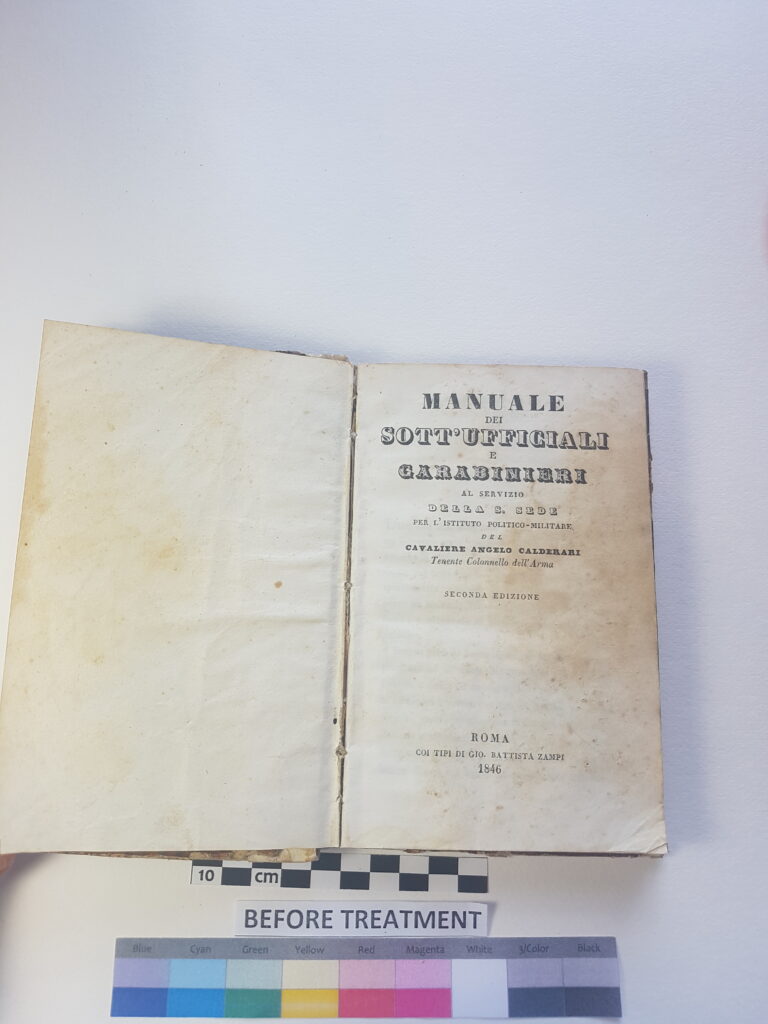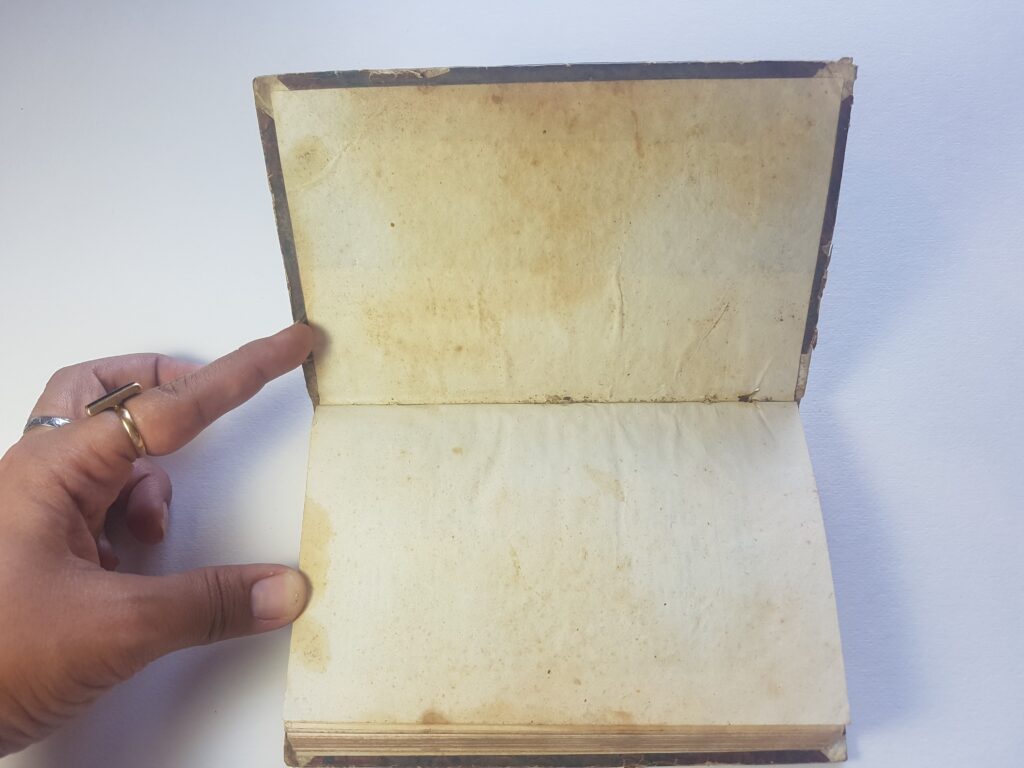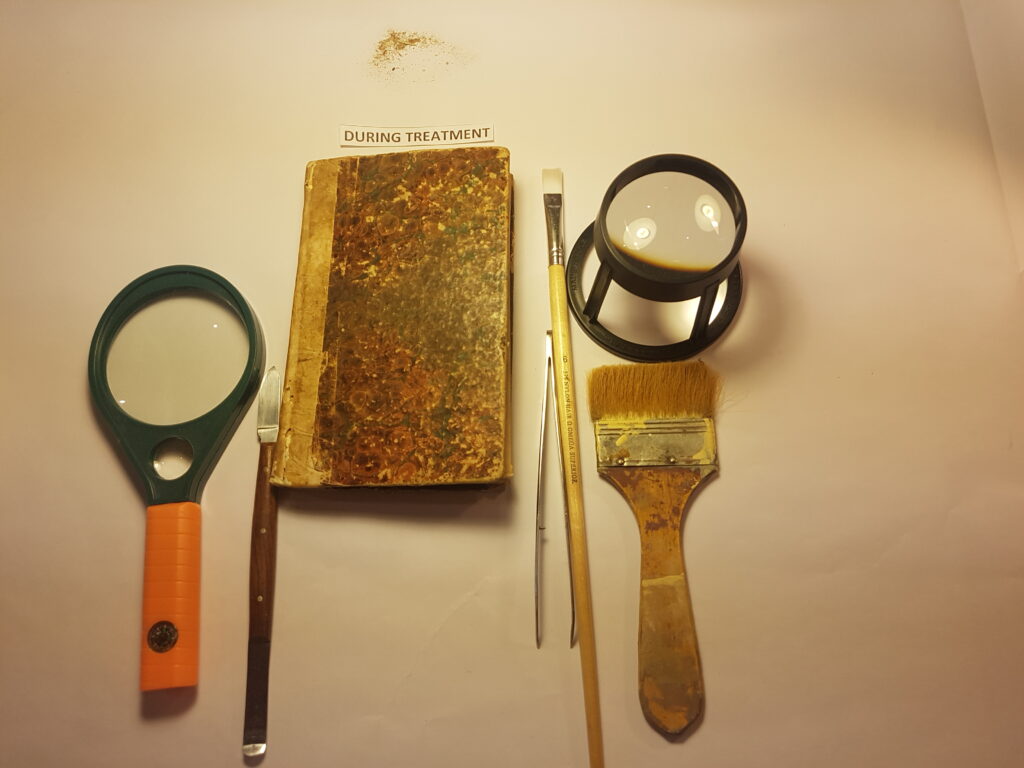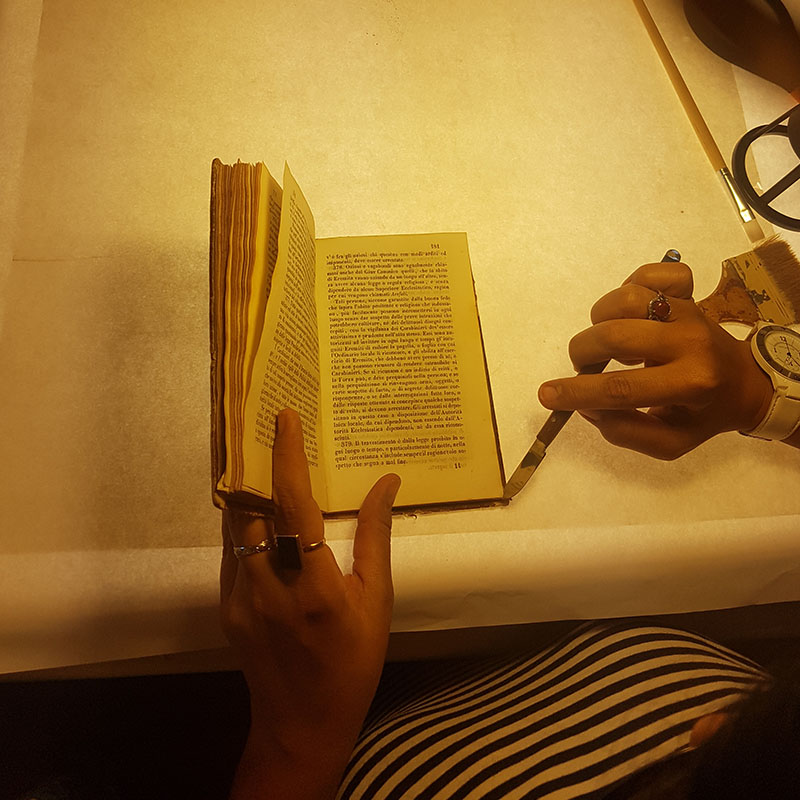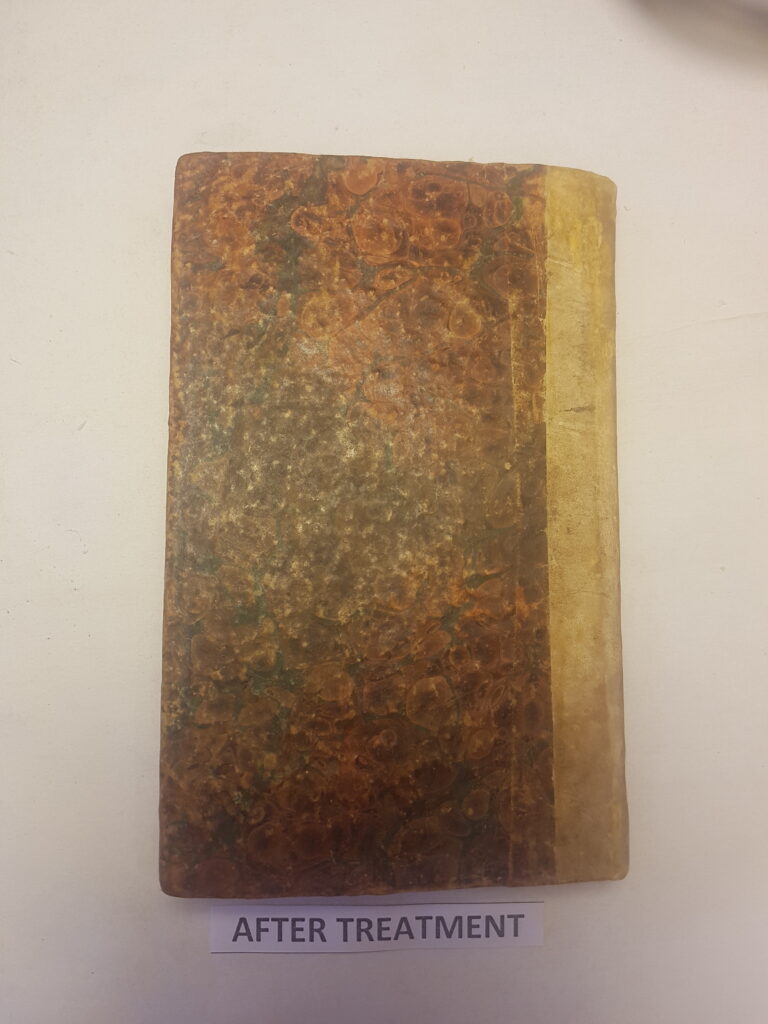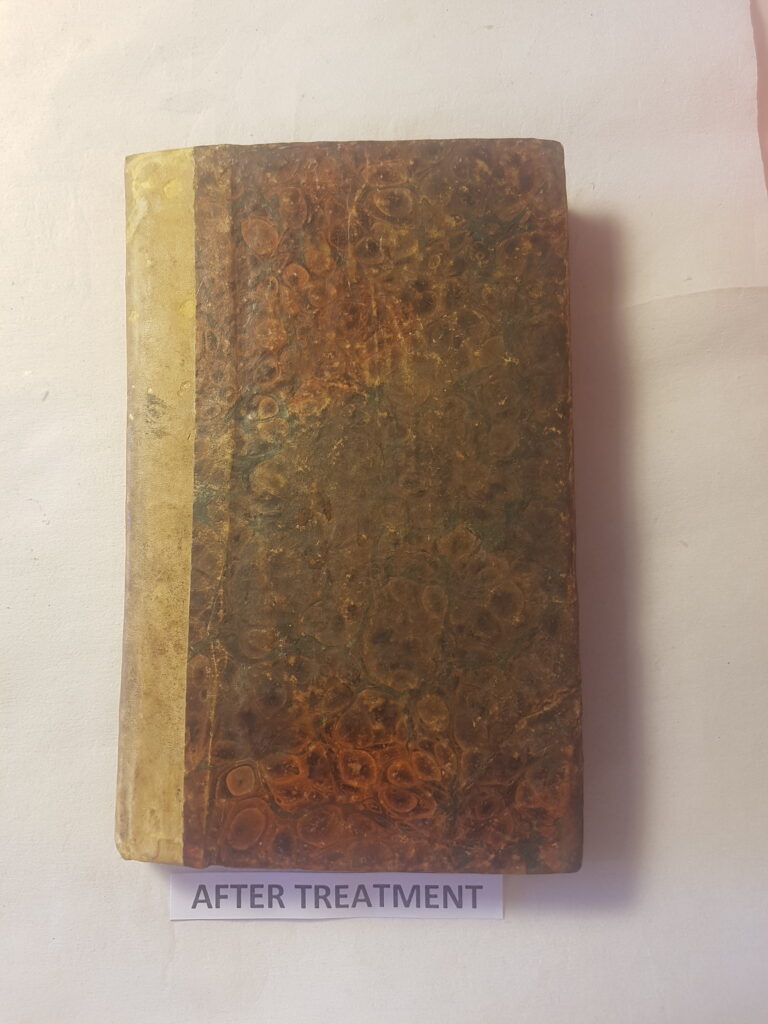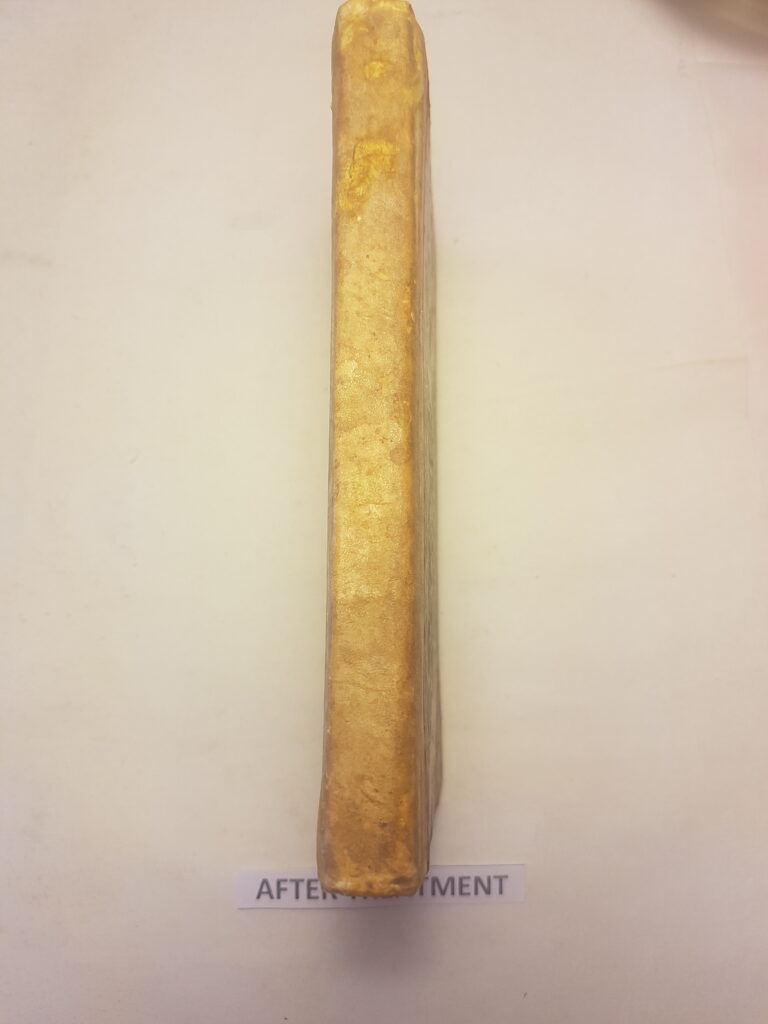By: Paras Shah
San Gemini Preservation Studies
20/08/17
Name : Manuale dei Sott’ufficiali E Garabinieri
Printed in : Roma
Printer: Coi Tipi Di Gio. Battista Zampi
Dimensions of Book:
Width 105 mm
Height 170 mm
Thickness/Edge 20mm
Material of Paper is Wove paper.
Three supports visible on spine with thick knots.
Quires in 4 bifolio show irregular stitching with single normal thread.
Ink:
they use printed ink here.
General Observations Of Cover:
Cover:
The condition stable. Cover material cardboard, covered with paper having marbling effect. Cover shows tears, fold lines and losses and abrasions. Shows signs of flaking.
The folds that appeared on the lower right on the corner of the cover shows damage that occurs because of the book handling.
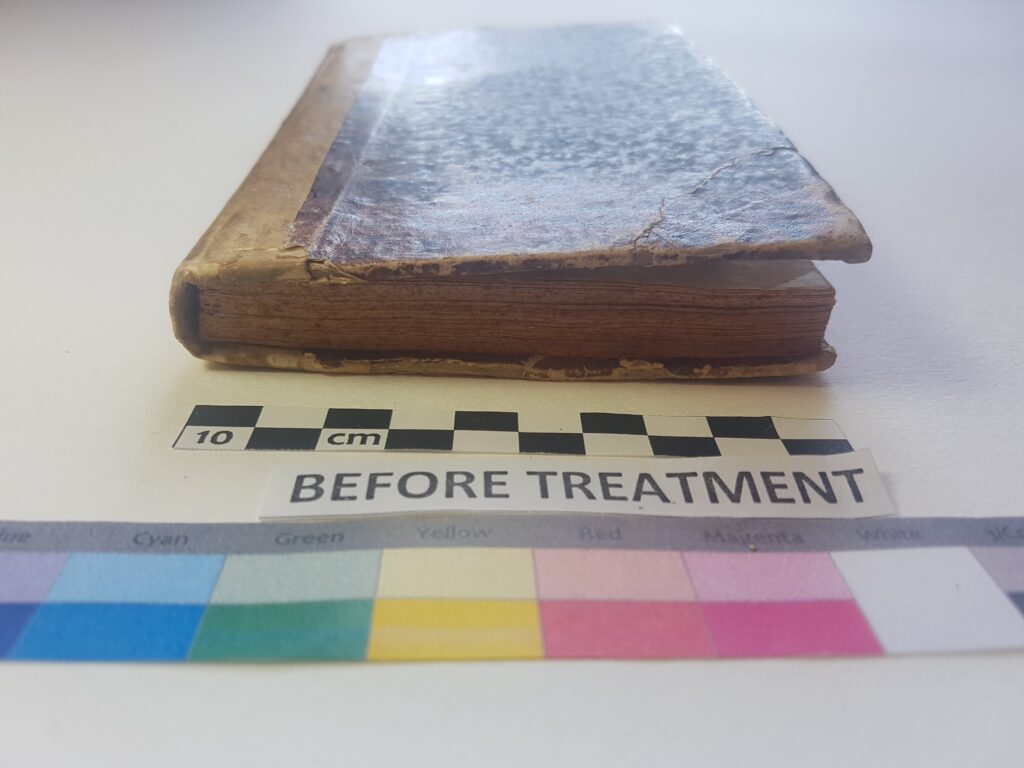
Spine :
The spine will be manufacture by the alum Tawed material.
The spine of the book shows signs of insect activity on it and the Faults that occurred were because of insect activity. Similarly, faults like blots, abrasions, holes, and fungi are because of the insect’s activity, and the most probably are the beetles.
Edges:
show discoloration, abrasions and loss of material, and weakening at some points. Signs of flaking visible. Edges show red ink color.
The Condition of Cover and Spine Before the treatment occurs:
Inner Page/ Turnin General Observations:
Inner page shows visible signs of Fungi. similarly , the whole condition of the book is sensitive but it was stable to handle.
The pages of the book also have faults like dirt, discoloration , oxidation issue , dehydration problem , foxing, earth, loss of material because of the insect activity from the spine.
The papers was in good condition but due to the broken threads few pages were out of the book.
Inner title page :
It shows major signs of dirt, earth and discoloration, insect activity, secretions of insects, fungi activity, wax drops, foxing, oxidation, folds, dog ears.
End quires:
It show major discoloration, water stains, oxidation, acidity. Spine shows weakening from quires.
Knot of thread visible on pages 172/173
Inner pages:
of book show discoloration, dog ears, folds, wax drops and foxing on few pages
Title Page and Turnins
Treatment method
The tools present are use to dry clean the objects in a proper way.
Hard and soft brushes, scalpels, tweezers, volcanic sponge ,spatulas.
Procedure:
The soft and hard brushes is use to clean the title page to end pages and the tweezers are use to straighten the corners of the book, stubborn wax stains can be remove , dirt is also remove from the sponge. Every page of the book is dry clean patiently in similar way.
After this dry cleaning is done carefully and throughly.
the loose paper of the books is because of the broken threads which is make secured by mending it with new threads.
The original thread is connect with new thread with help of knot and and quires were stitched in same irregular stitching.
But, some of the the books does not require the treatment because of the stableness of the condition of the books.
The object does not require wet treatment or deacidification due to
stability of the condition.
Mending/Reinforcing:
Glue used for mending : Starch paste with Tylose 1:1
Japanese Tissue Jengujo Kashmir 9gsm
Japanese Tissue Kozo SHI 23-25 gsm
After dry cleaning the book is mend and reinforce with starch paste glue which is use for the cover, as the cover needed mending.
Inner portion:
In the Inner portion of the book the improvement is a need . Mending can be perform where the perforations are present, the other pages are in stable condition and do not require lining or mending.
Perforations in the spine are carefully measure by tracing over Mylar sheets of the book . The Jengujo kashmir 9gsm will be cut according to the size of the perforation. Very carefully with help of spatulas, the thinner Japanese paper is line inside the holes from inside the spine with starch paste and Tylose mixture. This is a detail process and thin wooden sticks and tweezers are use to carefully apply the tissue without damaging the spine. This is then leave for drying. All perforations are fill from the inside of the spine/Alum-tawed. The inner lining can be done and the mends present and leave for drying. The lining from the outer spine is done on same perforations with a thicker Japanese paper Kozo SHI.
The paper will be cut again of the holes and layers of the where thicker Kozo SHI is going to apply and then it will be dry by each layer.
After the thickness reached the thickness level of the alum-tawed spine, giving it one smooth finish. All holes can be mend in similar way.
The folds on cover are straighten.
One fold on lower right corner of the book is fill with small pieces and fibers of Jengujo Kashmir, very carefully, filling the crevice of the fold and laying some on the level of the outer edge of cover, so it do not overlap the material of the cover.
This will be done very patiently and carefully and it is then allow to dry.
The folds on the edges are straighten with help of tweezers, and a thin layer of Jengujo Kashmir should be laid on it for support as edges were worn off.
When the glue is dry on the book then the edges can be paint with the marble effects for the better appearance of the book .
Control of Tonality Of Cover for Aesthetical Reasons :
After the cavity of the book is fill easily. The cover as given an aesthetical touch by controlling the strain of the cavity of the book
This can be perform in order to minimize the impact of lacunae on the cover and spine.
The tonality of the abrad and mend layer of the cover and spine is perform with easily removable water colors, as originally as giving a marbling effect on the cover.
Colors used :
Burnt Umber, Raw Sienna, Viridian, Olive Green, Yellow Ochre, Black and White
Carefully retouching the mend parts of the cover and spine the colors can be mix with one shade less than the first in order to differentiate it from the first .
Very gently the lacunae on spine are retouch by applying simple color whereas cover is retouch by mixing and applying a marbling technique.
After Treatment
The whole condition of book after the treatment done
Results:
It’s Stable and aesthetically appealing.
By: Paras Shah
20/08/2017
Program D
San Gemini Preservation Studies

